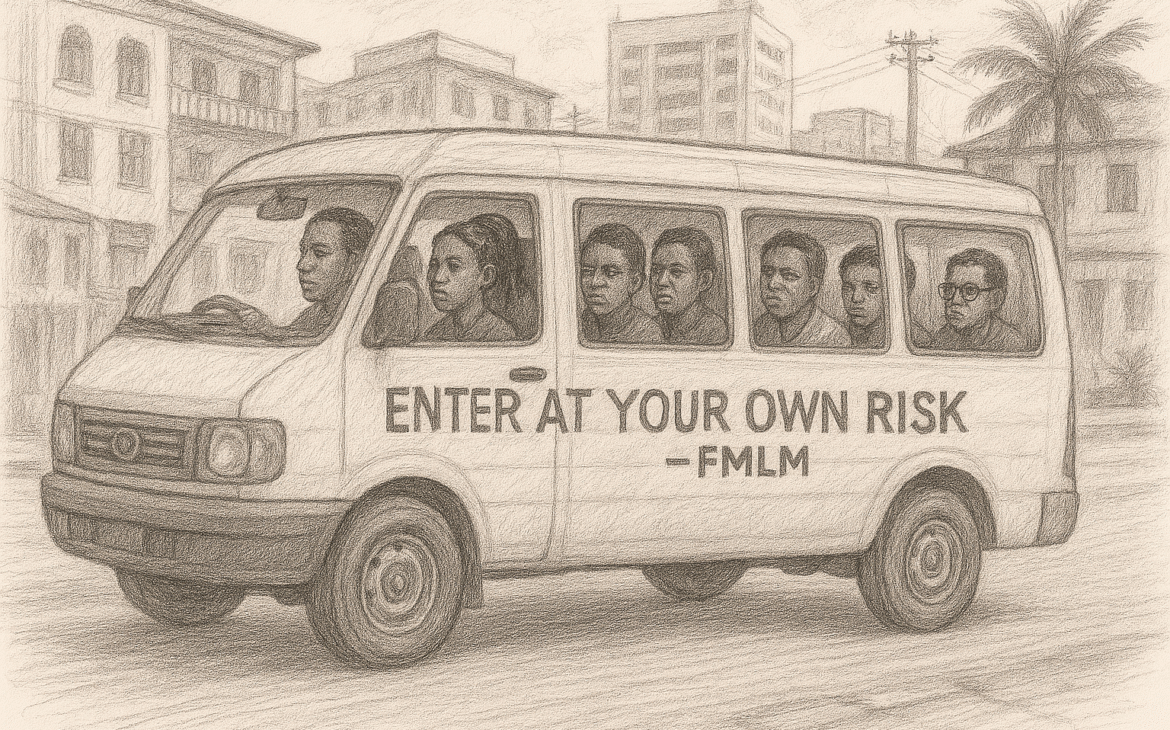Why the FMLM Transport Model Fails: 9 Hard Lessons Learned

My commitment as a change agent demanded that I document this experience.
‘BG Doh
We invested heavily in an ambitious First Mile, Last Mile (FMLM) transit franchise in a Major West African Metropolis (MWAM), hoping to deliver a crucial public service and solve the city’s transport crisis. The painful paradox? The concept was brilliant, but the financial model, franchisor inertia and governance were fundamentally broken. After months of operational struggle, here are the nine non-negotiable lessons every investor and policymaker must understand.

Disclaimer: This document is an independent operational analysis and social commentary based on the author’s experience in a First Mile, Last Mile (FMLM) public transport franchise operation. All names of organisations, routes, financial metrics, and locations have been intentionally fictionalised, stylised, and aggregated to maintain strict compliance with non-disclosure obligations. This document focuses exclusively on systemic challenges, operational lessons, and policy recommendations for public benefit.
The Paradox: Vision vs. Reality
We were not just investors—we were believers. Believers in the power of infrastructure to transform lives, in the promise of public-private partnerships to deliver efficient services, and in the idea that commercial success could coexist with social impact.
Our team was no greenhorn; collectively, we had over 120 years of combined experience working in the economy, with 75% of our team having worked professionally internationally. Additionally, we have complementary skill sets – Accounting, Marketing, Business Development, Operations and more. Looking at our work experiences, skill sets and network, we were well-equipped to navigate complexity. We saw the First Mile, Last Mile (FMLM) transport franchise as a compelling opportunity to contribute to urban mobility in a major West African metropolis (MWAM), while building a sustainable business.
The concept was elegant: connect underserved neighbourhoods to the city’s Bus Rapid Transit (BRT) system through short-haul routes operated by private franchisees. The FMLM would serve as the connective tissue between local communities and high-capacity transit corridors. It promised formalisation, safety, and convenience in a sector long dominated by informal, chaotic, and often dangerous transport options.
But what unfolded was a sobering lesson in the limits of vision when divorced from operational reality. This treatise is an attempt to document that journey—not as a lament, but as a public service. I hope it serves as a guide for future operators, policymakers, and urban planners seeking to build resilient, inclusive, and economically viable transport systems.
The Root Causes of Failure
- The Fare Paradox: The fixed, government-mandated fare was insufficient.
- Asset Not Fit-For-Purpose: With three buses having their fuel tank falling off from the bodies of the vehicles, leaking radiators, ingress of water during rains, battery draining on supposedly new vehicles, malfunctioning air conditioners, it became easily apparent that the buses supplied were not fit for the use of plying the routes we put them to.
- High Equipment Costs: Our buses were procured from the UMC authorised Vendor at almost five times the costs expended by our competitors on the minibuses they were using, which were, in all respects, similar to ours, except they were imported as second-hand vehicles.
- Infrastructure Deficiency: The poor roads reduced revenue, arising from the inability of the buses to complete the minimum number of trips that had been planned.
- Regulatory Ambiguity: The Union, a notorious one, was supposed to be managed by the UMC so that our operations would not be disturbed. The UMC did not, and this led to a few encounters resulting in bodily harm to our drivers as well as intentional damage to some of our buses.
- Human Capital: Challenges in driver retention and quality control, given the low profit margin. A case of revenue theft was established against some of the drivers, where they sabotaged the use of the transport cards and instead collected cash, retaining a portion of these.
4 Critical Lessons
- Subsidies Are Non-Negotiable
- Enforcement Precedes Expansion
- Dynamic Pricing Is Essential
- Infrastructure Is Foundational
- Get your Lawyers piqued
- Be Aware of Political Patronage
- Focus on Financial Projections
- Get in the Lawyers
- Exit Speedily
Call to Action: Policy Recommendations
Our failure was not one of execution—it was one of systemic design, an unrealistic economic model placed in a hostile operating environment. The FMLM model, as structured, was economically unsustainable and operationally hostile. Hold vendors accountable for vehicle quality. Reimburse operators for downtime not caused by them. Redesign the franchise agreement to reflect real-world conditions. Introduce subsidies, enforce regulations, and deliver promised infrastructure.




Ola
Thank you very much, @Sheik, for the powerful and sobering analysis delivered on our last engagement or ‘partnership’ with the government. Here are my suggestions for a potential way forward in future engagements with any government on public-private partnerships (PPPs), especially in the transport sector. I believe our core strategic shift must be from being a Believer to becoming a Realist-Innovator. While the vision remains noble, it is not enough without a *ruthless* focus on operational and systemic realities. I propose that we conduct a thorough, independent “Hostility Audit” in our future dealings. It is crucial that we perform what financial experts refer to as a forensic analysis of the operating environment that surpasses standard due diligence. We must scrutinise the rules of engagement more carefully and ensure we never again submit to rigid protocols. Our previous experience was not a true partnership but more akin to a master-servant relationship. The way forward is not to abandon the vision but to pursue it with disciplined, clear-eyed strategies.